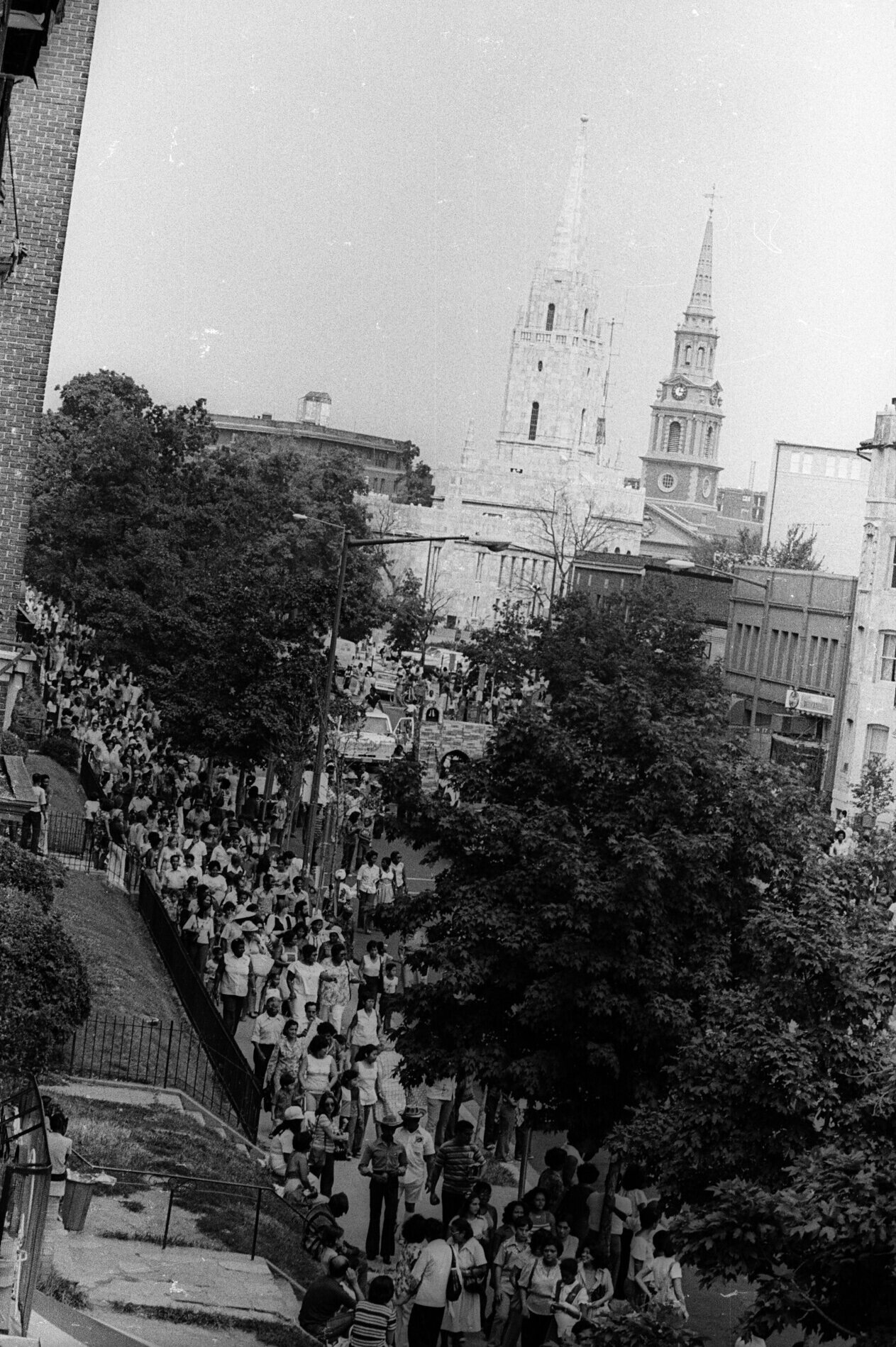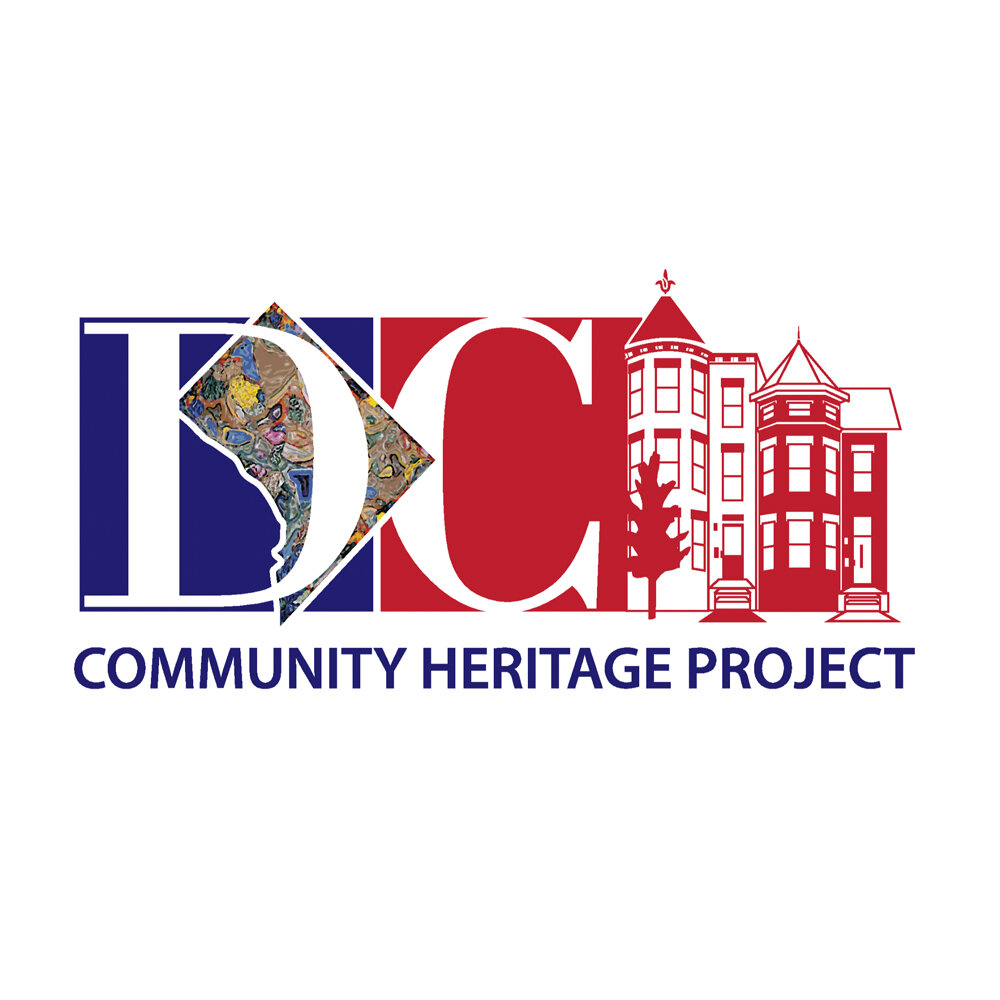About
For forty years, the respected community photographer and local activist Nancy Shia has lived in an apartment on the corner of Ontario Street and Columbia Road. During that time she has taken countless photographs of the Columbia Heights, Adams Morgan, and Mount Pleasant neighborhoods.
Ranging from a powerful series of photos of homeless women and men who gathered outside her window and whom she befriended and worked closely with, to numerous photos of the DC Festival Latino Parades that for decades marched outside her window, Nancy Shia has compiled a significant and remarkable collection of a community not only in transition, but one on the verge of being completely forgotten and erased. Her photographs include African Americans protesting against gentrification in the 1970s, the renaming of Rabaut Park to "Parque Farabundo Marti," the decades-long changes to Walter Pierce Park, the growing Afro- Latinx community, and the gentrification of 18th Street and Columbia Road.
Shia’s photographs are an invaluable historical archive of Central American, Latinx, Afro-Latinx, and African-American communities that deserve to be remembered and honored.
Why
The aim of this website is to archive and exhibit Shia’s collection for use by teachers, students, and community members. These photos, many of which have never before been exhibited, provide an important narrative of neighborhood activities, including local politics, work, community activism, homelessness, immigrant businesses, and the remaking of space over time.
While much has been written and exhibited concerning gentrification, we know little of how and why neighborhoods change over time. What are some of the factors that have allowed gentrification and neighborhood change to happen in the first place? What do we remember, what do we forget, and why?
Unlike other sources, there is a fixed, intransigent quality to photos and photographic archives that cannot be easily mitigated or erased with alternative narratives and interpretations. It is a source that demands to be seen, understood, and historically contextualized. Photos, as historical markers, can and do change minds.
By teaching students how to interpret visual culture, in particular photography to understand historical moments and events, we allow for an opening, a rethinking of how to see those things we often take for granted. As students become increasingly invested in visual learning and online courses, Shia's archive of photos can assist teachers with resources to create a different learning experience and to help students understand what are often tedious, layered, and difficult urbanist concepts of change. Students are encouraged to interpret these photos and write their own stories. And finally, the photos are a powerful reminder of the history of immigrant and communities of color in D.C. An active documentation of communities and neighborhoods that are so easily erased by development and convenient forgetting.
Nancy Shia Bio
I began taking pictures of people sitting on a park bench on the New Haven Green in Connecticut during a gap year between high school and college. My first job out of high school was working for Community Progress Inc., a community organization that was part of President Johnson’s Great Society Program. My first camera was the Polaroid Swinger. The job gave me the opportunity to photograph people and neighborhoods in New Haven.
Nancy Shia at work.
Two years later, I was living in New York City and using an Asahi Pentax Spotmatic 35mm camera. I had a darkroom in my apartment and was photographing street life and studying sociology and photography at the City College of New York (CCNY). While at CCNY, Black and Puerto Rican students shut down the college two spring semesters in a row to protest a lack of minority enrollment in the college. Documenting these protests felt like writing history. The antiwar movement was in full bloom, and I began attending big demonstrations in Washington D.C. After CCNY, I studied social work at Columbia University and documented the upper West Side neighborhood I lived in. I also photographed East Harlem, where I was assigned to the legal services office to help organize tenants, and I began to photograph people actively organizing around housing.
In 1972, I moved to D.C. to go to Antioch Law School. For the first six weeks of law school, Antioch placed students with a low-income family in D.C. I lived in Clifton Terrace with Ma Pat, a community organizer who introduced me to community leaders and taught me a lot about Chocolate City.
Project Director’s Statement
Nancy Raquel Mirabal and Nancy Shia
By Nancy Raquel Mirabal, Project Director
The Out My Window Project came about one afternoon as I was visiting with Nancy Shia at her apartment on the corner of Columbia Road and Ontario in Adams Morgan. Recounting decades of photographing events, people, and moments, she turned to me and said, “if you only knew how much I’ve seen and photographed out my window.”
The Out My Window Project is both material and metaphor. Not all of the photos have been taken out of Nancy Shia’s window, but the window as metaphor and opening, explains her commitment and passion for photographing her neighborhood and community. She is one, if not the only photographer, to have photographed the same D.C. neighborhoods for close to forty years. That alone is an unparalleled achievement that allows us, the viewer, the rare privilege to witness these communities evolve and change over time.
In a time of continuous and uncritical visuality, a period marked by social media that demands our constant attention and gaze, Shia’s photos ask that we see with intention. That we understand the precarity of bygone moments and the tenuous stillness of now. Her photos are a reminder of neighborhood histories and experiences that are continually being shaped and guided by generations of families, communities and networks that all lived, worked, resisted, and played here before and during the revitalization programs, gentrification, and economic displacement. Communities made up of African Americans, immigrants from all parts of Mexico, Central America, the Caribbean, and North Africa who called Adams Morgan, Columbia Heights and Mount Pleasant their home.
By taking these photos, Shia has marked and defined historical moments and events. Her photos document political movements, community activism, changing neighborhoods, and shared joy that until now, and with the publication of her photos, we might not have known existed. There, out of her window — both physical and metaphorical — perched with a camera in her hand, Shia has recorded an invaluable and powerful photographic history that eludes the unthinkable and makes visible the truly extraordinary.
Nancy Raquel Mirabal is an associate professor at the University of Maryland, a board member at Teaching for Change, and project director for Out My Window.
The Out My Window website was created by Teaching for Change as a resource for D.C. area teachers, students, and the wider community. Teaching for Change will continue to collect and share teaching ideas and stories about how the photos are being used in classrooms. Out My Window is part of the collection of resources for D.C. area teachers on local history.
Out My Window was supported by a DC Community Heritage Project (DCCHP) grant to Teaching for Change from HumanitiesDC as part of the “Humanities Grant Program,” an initiative funded by the DC Commission on the Arts and Humanities. The DC Community Heritage Project is a partnership of HumanitiesDC and the DC Historic Preservation Office.
The website was designed by Teaching for Change Creative Coordinator Mykella Palmer-McCalla.






